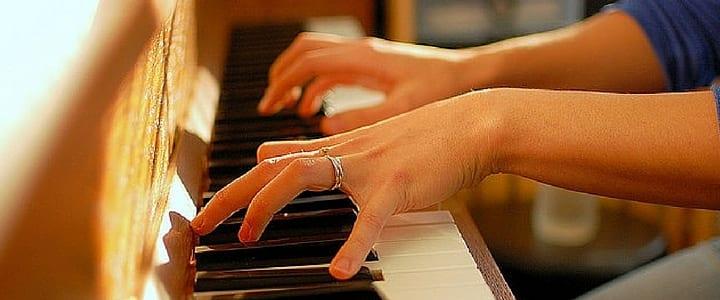One of the keys to successful piano playing is proper hand placement. Below, piano teacher Ryan C. shares three fun exercises beginners can do to improve their piano hand position…
When trying to teach beginner students the proper piano hand position, I’ve often found that telling them to “move this finger in such and such a way” is a fairly challenging task.
This is especially true if they haven’t developed finger independence through other means. It very quickly becomes necessary to relate finger and hand shape to things that everyone can do.
The following exercises are just that – things that everyone, even new pianists or musicians, can easily do.
In fact, the knowledge of what proper piano hand position should look like is something that even non-pianists can master in a very short amount of time.
However, mastering the actual physicality of automatically having your hand take a certain shape can take some time.
Below are a few exercises that beginning piano students can use to establish great piano hand position.
When doing these exercises, always be aware of any tension in your hand, and remember that the first knuckle of each finger (closest to the finger tip) should be firm yet bent, not collapsed and straight.
1. Play Catch
Depending on the age of the student and his or her respective hand-sizes, this exercise will work best with a ping-pong ball or a tennis ball.
- Have a friend lob the ball at you in an arch or simply bounce the ball off a wall yourself and then catch it.
- Notice what your fingers do when you catch the ball – they should curve around the top portion of the ball, but not all the way around it.
- Emulate this hand position when you play piano.
2. Meet Someone New
This is a great exercise for a student of any age, but will work best with a partner.
- Stick out your hand as though you were going to give someone a hand-shake (or give a real hand-shake if possible).
- After grasping your partner’s hand and holding it for about a second, let go of it while maintaining the position held in your hand.
See Also: Finger Exercises to Increase Speed
3. Take A Drink of Water
This exercise is very, very simple, as there is no partner necessary. Please note that glasses should be sized according to student’s age / hand size.
- Simply have your student grab a glass of their favorite beverage.
- Ask your student about the shape of their hand while they hold the glass. (Some students may lift their pinkies or other fingers, but ask them to experiment around with what feels most comfortable for their hand.)
- Hold the glass from the opposite side, and instruct your student to let go of it but keep their hand in the same shape it was in.
- Then have your student flip his or her hand so his or her palm is down and place it on the piano keys.
- Similar to the “Meet Someone New” exercise, this should result in a piano hand position that’s pretty close to a proper one. Pay close attention to the curvature of the fingers as well as the distance between the thumb and index finger on this exercise.
As always with piano hand position exercises, remember that the goal is two parts. First and foremost, a lack of tension. The hand should never feel tense when doing closed-hand position shapes like we are doing.
Secondly, the knuckles closest to the finger-tips should be firm and bent, not floppy.
Thank you so much for reading this article! I hope that this will give you some practical ways to get started on your journey toward piano hand position mastery.
 Post Author: Ryan C.
Post Author: Ryan C.Ryan C. teaches piano, ear training, and music theory. He is a graduate of San Diego State University with a B.M. in piano performance. Learn more about Ryan here!
Brooke Neuman

